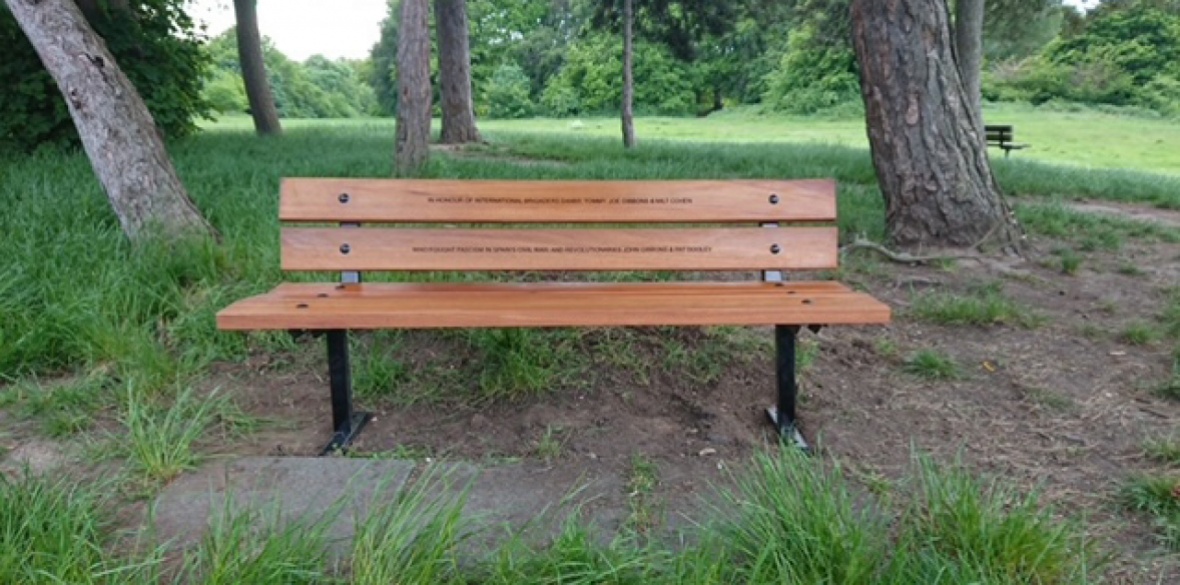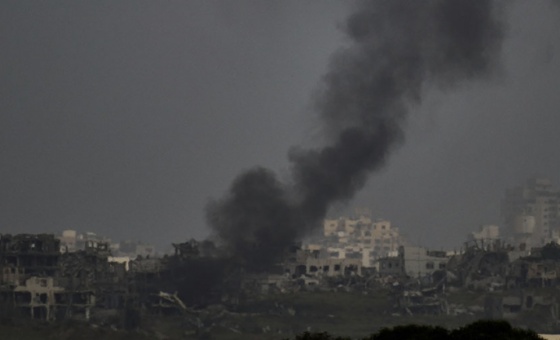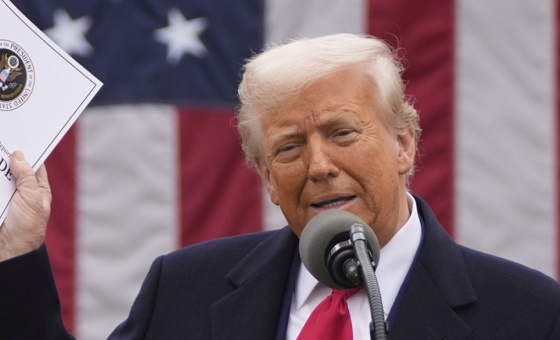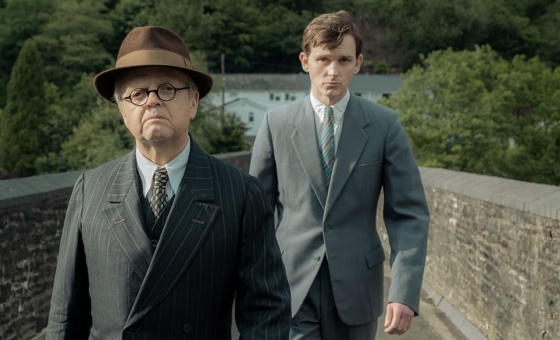This is the last article you can read this month
You can read more article this month
You can read more articles this month
Sorry your limit is up for this month
Reset on:
Please help support the Morning Star by subscribing here
THIS weekend, a steady stream of anti-fascists will be making their way to memorials all over the world, marking the 85th anniversary of the uprising which led to the Spanish civil war.
Comrades will lay wreaths, flowers and ribbons in the vibrant red, yellow and purple of the Spanish Republican flag.
Many will give the clenched-fist salute, honouring the volunteers who fought in the International Brigades, taking on the might of Franco and his grim allies Hitler and Mussolini.
Some will see large groups gathered (pandemic permitting). Countryside and cities will hear the Internationale sung, in a myriad of languages, echoing the voices of the brigaders themselves, on the battlefields of Spain.
Some memorials are mighty monoliths, in metal or stone. Many are exquisite works of art, such as the sculpture in London’s Jubilee Gardens.
The late Michael Foot MP unveiled it in 1985, after its commission by the Greater London Council and the International Brigade Association (IBA, the predecessor of the IBMT).
Glasgow has its beautiful La Pasionaria statue, depicting Spanish communist Dolores Ibarruri, whose speeches fired up the anti-fascist fights.
In Cardiff, a memorial stone bears the 36 names of those who died in the civil war. One of its plaques shows a tree of life, with the dove of peace.
Glance at the website of the International Brigade Memorial Trust now, and you’ll find a long list of artefacts honouring the brigaders and medical staff.
At least one “memorial” is on the move; it’s a No 5 bus in the city of Brighton and Hove, named after Dr Reginald Saxon.
A communist, the softly spoken doctor served on the front line and developed new methods of blood transfusion, saving countless lives.
Behind every memorial is a story of heroism. Many mark an episode in the lives of those whose names appear; volunteers who survived the bullets and bloodshed often went on to greater things.
For those who died in Spain, there are loved ones who find some comfort in these stones and plaques — those they grieve for have no grave but the battlefields.
Some years ago Dr Dacia Viejo-Rose of the University of Cambridge looked at the impact of war memorials.
She said that the cemetery and ossuary at Douaumont, marking the battle of Verdun, “became firmly associated with a reconciliatory symbolism when French president Francois Mitterrand and German chancellor Helmut Kohl stood in front of the ossuary and a coffin draped with both the French and German flags, and having listened to the German anthem, held hands as the Marseillaise played.”
In Dresden, there were political clashes at events to recall the devastating bombing in 1945, but in later years, the city’s peace movement invited a delegation from Coventry, which suffered a similar fate in 1940.
Participants formed a human peace chain around the German city, demonstrating that it is what the living do, now, that properly honours the dead.
The other stories behind these shrines are those of the families and comrades who helped create them.
The fundraising, bureaucracy-beating and sheer persistence often involve a grit that true anti-fascists do so well.
It’s a sad fact, however, that some memorials can be targets. Vandalism of those in Spain itself is a constant worry.
In 2005, a plaque naming the 90 brigaders of the British Battalion who died at the battle of the Ebro, was unveiled in the Sierra de Pandols.
It was attacked by Spanish neofascists, and subsequently brought to the safety of London’s Marx Memorial Library.
Dr Almudena Cros, president of the Asociacion de Amigos de las Brigadas Internacionales (AABI) in Madrid, has condemned attacks on a monument in Vicalvaro, the Latina area of the city. Unveiled in 2017, it was sprayed with swastikas only a few months later.
She said: “There are also political moves to try to remove the various plaques and monument to the volunteers, located in Fuencarral cemetery (northern Madrid).
“The persecution of the ideals that supported the fight against international fascism and eventually defeated Nazi Germany and fascist Italy is baffling, to say the least.
“Resistance heroes and heroines in France are honoured and respected for fighting fascists, but here in Spain, the memory of the anti-fascist volunteers and the legitimate army is still a target for uneducated vandals and conservative politicians, more than 80 years later.”
IBMT chair Jim Jump said: “Memorials to the International Brigades are being removed in some countries of eastern Europe against the backdrop of a scandalous attempt to rewrite 20th-century history.
“In October 2019 the IBMT sent angry protests to British Labour MEPs after they voted in favour of a European Parliament resolution equating fascism with communism.
Astonishingly, the resolution blamed the Soviet Union for the second world war, and it failed to mention British appeasement of fascism or the Spanish civil war.”
IBMT president Marlene Sidaway has a warning, too: “Fascism was not eradicated in 1945; it remains in the shadows until challenging times bring out prejudice, selfishness, blame and inequality — and the fight against it continues.
“This is precisely the reason why (these memorials) are important. Anything we can do to bring the sacrifices and bravery of the International Brigaders to a wider public consciousness is a reminder that we too must join the fight against fascism.
“We can do this by gathering at our local memorials — on any particular day relevant to those who are commemorated there.
“It was also important to keep an eye open for any sign of damage, graffiti, or wear and tear on the memorials.”
One, a 40-year-old wooden bench on Hampstead Heath in London has recently been “rescued.”
Passers-by noticed it was in disrepair, and with the help of social media, alerted the family.
The bench was in memory of Joe, Tommy and Danny Gibbons, a true band of brothers. Joe’s granddaughter Mariah Wilson, in New York, is delighted that the bench has been replaced.
Her grandfather fought with American brigaders, although the three boys were originally from the Vale of Leven in Scotland.
Danny was injured at the battle of Jarama, but survived. Tommy was killed at the battle of Brunete.
Scottish IBMT members made donations, with the family bearing most of the cost of the replacement.
Both the old and new benches recalled family member Pat Dooley, once jailed in 1935 for taking on a meeting of Oswald Mosley’s British Union of Fascists.
The new bench pays tribute to Milt Cohen, Joe’s good friend who also served in Spain.
Another name added is John Gibbons, the fourth brother. It’s understood that the Communist Party in Britain drew the line at four from the same family going on such a risky mission.
The number of memorials grows, as stories are uncovered, and cities, towns and villages discover their heroes and heroines.
Marlene Sidaway recalls: “When the IBMT began in 2000, there were already 38 memorials to the International Brigaders and since then they have increased to 180.”
Sidaway’s late partner, David Marshall, one of the first to serve, was instrumental in the production of the Teesside memorial in 1939.
There is work forging ahead on a new memorial, so Teesside may soon be the location of the oldest, and the most recent memorial to the International Brigades.
A performance of The Ballad of Johnny Longstaff was the catalyst. The Young ’Uns powerful show depicting the life of the former brigader, in Johnny’s hometown of Stockton, inspired local publican John Christie to fundraise for a memorial to the eight volunteers from the town.
The unveiling of the new memorial, close to the town’s historic Green Dragon Yard, is planned for April 2022.
A final word from Sidaway: “We can all share our knowledge of the International Brigades and their fight against fascism in the 1930s — that is our own ‘memorial’ to them.
“They are now, and always will be, a source of inspiration to us all.”
To donate to the Stockton on Tees memorial fund visit www.justgiving.com/crowdfunding/stocktonbrigaders. For more information about the International Brigades go to
www.international-brigades.org.uk.











